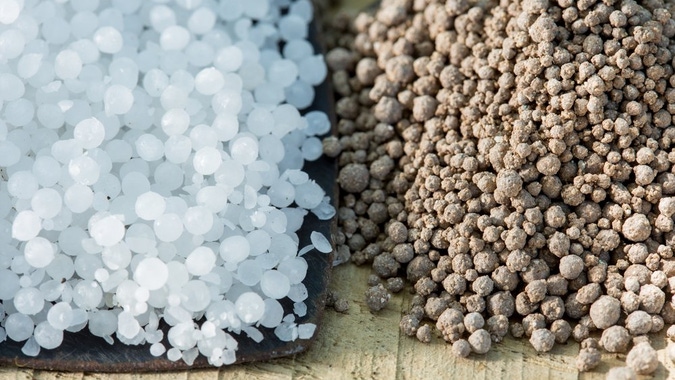Potash is a mineral-rich salt mined from underground deposits formed millions of years ago. It plays a crucial role in farming, where it used in fertilizer to replace minerals that get depleted during the farming process. Potash stocks have benefited as supply constraints from the Russia-Ukraine conflict have weighed on global potash supplies. Canada, Russia, Belarus and China produce about 80% of the worldwide supply.
Meanwhile, Russia and Belarus alone produce around 40% of the total supply. Due to sanctions supply of potash has been affected, and the scarcity is likely to continue for a while as the conflict between Russia and Ukraine continues for the foreseeable future. The EU sanctioning key players in the Potash industry such as Belarus’s MOP in addition to Russian firms, is likely to add further upward pressure on potash prices.

MarketBeat.com – MarketBeat
Potash Outlook: Potash production has been under pressure for a while as demand-supply dynamics remain out of sync. Additionally, demand for potash is expected to rise by about 4-5% over the next five years as farmers from the developing world, especially Africa, require more fertilizer for their crops. Prices per ton traded around $878 for potash during May, and farmers are increasingly facing expensive input costs, leading to many either giving up farming or forcing them to reduce their output. Furthermore, potash supplies were already under pressure even before the conflict began with capacity constraints stemming from depleting reserves affecting global supply.
Prices should remain elevated during the year as global supplies are expected to drop by around 10% for the year, with total shipment coming in at 62.5 million tonnes, compared to earlier forecasts of 69.5 million tonnes. The fall in supply could result in a 10-20% increase in potash prices.
Overall, the demand dynamics combined with the supply constraints bode well for potash stocks, which should benefit from higher margins and revenue. Consider the following potash stocks for your portfolio, as global affairs continue to provide a favorable environment.
Nutrien (NYSE: NTR) is a Canadian Potash company and is the world’s largest producer of potash. The company has made significant gains from the global potash shortage, with revenue surging by almost 67% during the first quarter. During the first quarter, net profit margins also surged to 18%, meanwhile, net profit came in at $1.3 billion. The stock trades at a relatively cheap valuation, with a price-to-earnings (P/E) of 11x, and with revenue expected to continue to be strong during the next few quarters, Nutrien might be the stock for you. Although the stock is already up 40% y-o-y, positive developments could continue to push the stock up higher.
Nutrien is expected to produce around 15 million tonnes of Potash in 2022, and EBITDA is expected to come in around $14.5 to $16 billion. Management expects demand to remain strong as crop producers looking to maximize yield in order to take advantage of higher crop prices; this may not come to fruition, since many farmers may abandon their crops due to an inability to afford the higher costs of production. In fact, early indications point to excessive costs leading to many farmers already reducing their output during the first quarter. Regardless, management expects all its segments to outperform. Finally, with record cash flow, the company has guided that it will buy back $2 billion dollars worth of stock.
Intrepid Potash (NYSE: IPI) is based out of Denver, Colorado, and is a fertilizer company that produces potash. The company continued to see its profits surge in the first quarter due to higher potash prices and volumes. Capacity constraints that weighed on revenue in 2021, should no longer be an issue moving forward, and management has guided that output should increase by an additional 35,000-50,000 tonnes in 2022, which should help bring in much higher revenue.
Management has also guided that net profit should come in at around $150 million for the year, and earnings per share should be around $9.5-10 for the financial year, which would put the forward P/E at around 5x. Net income margins might come down slightly from their current levels of 30% to around 25%, which could push forward earnings to around 6x, somewhat higher than if margins remain steady. Intrepid is also expected to continue to buy back stock during the year as cash flows increase. Altogether, should market dynamics remain robust, Intrepid’s stock could rise significantly from these levels.